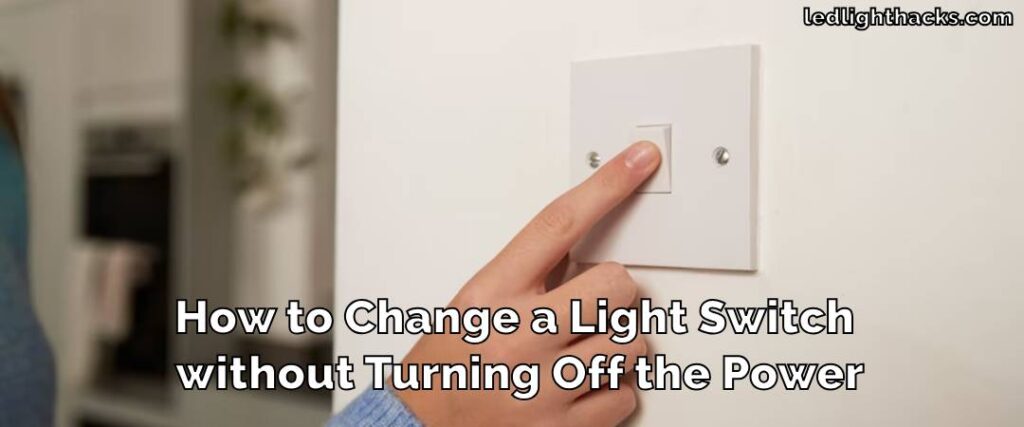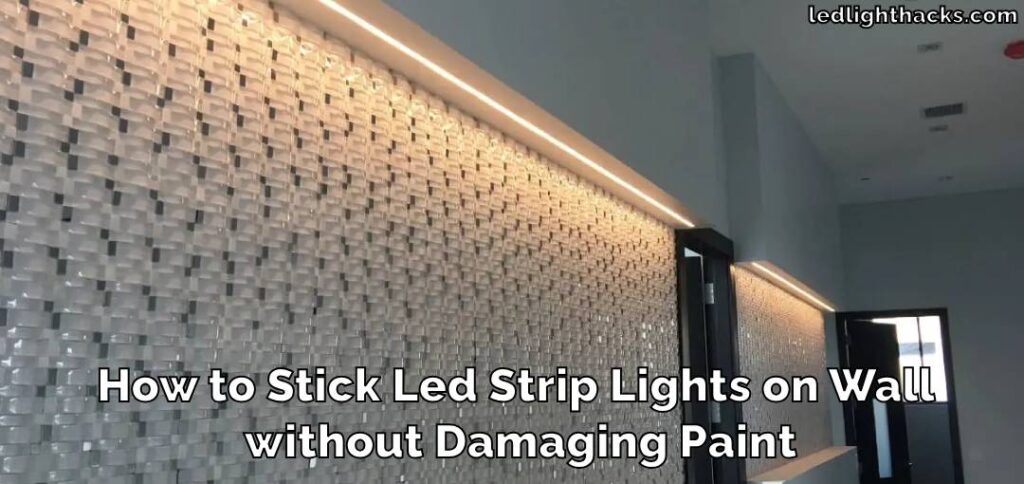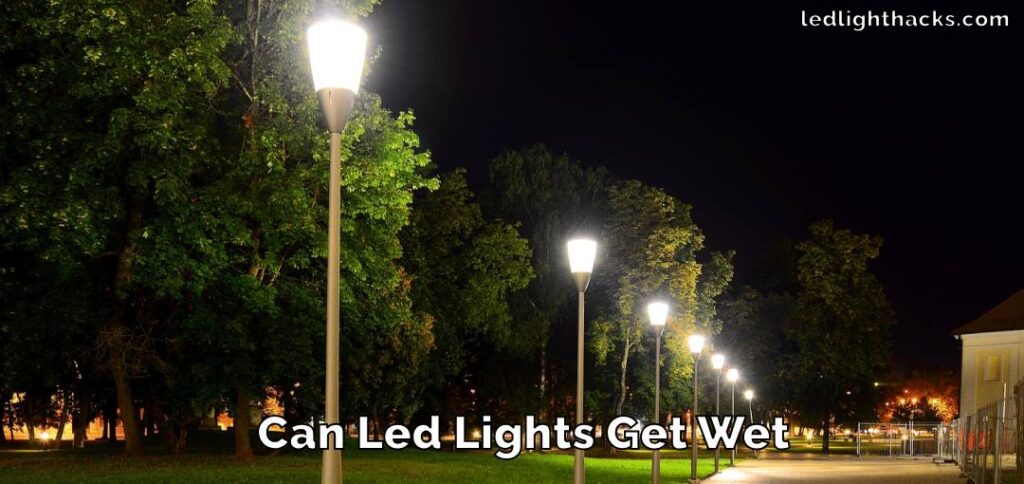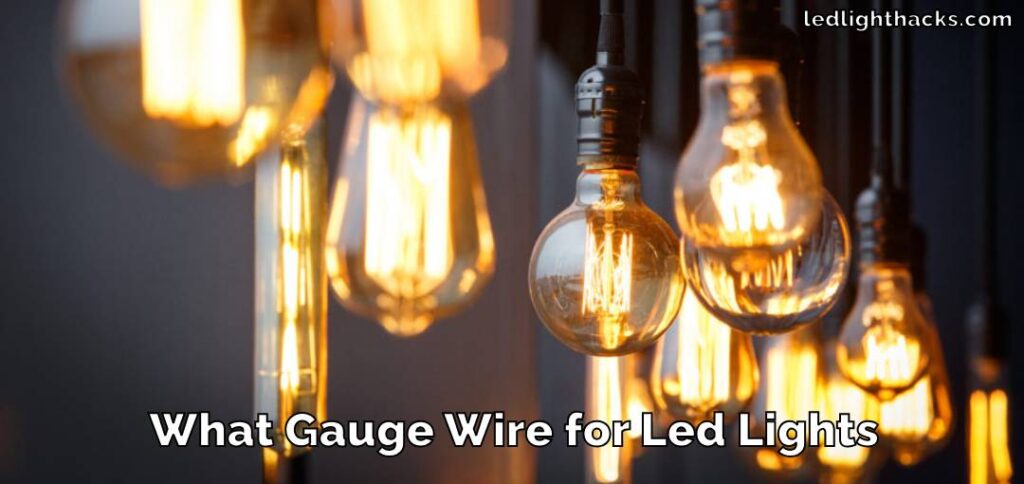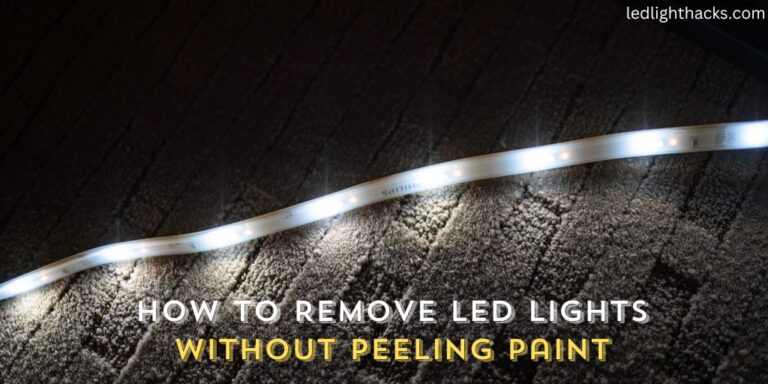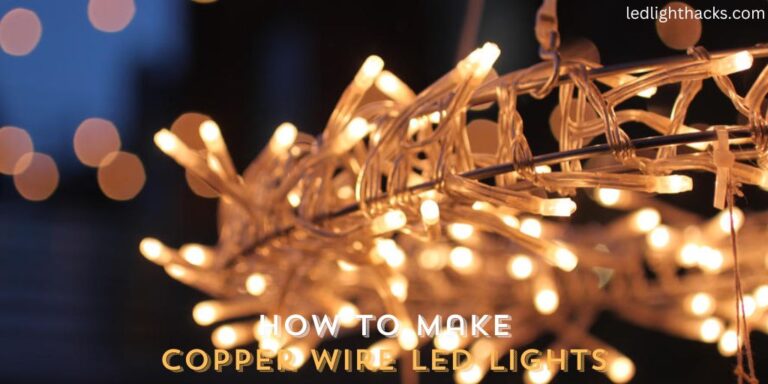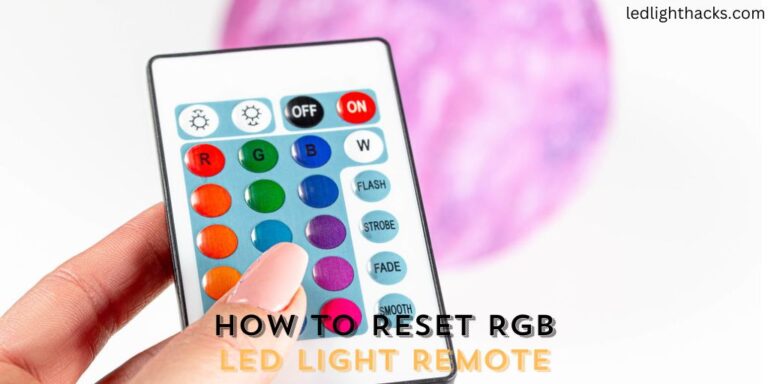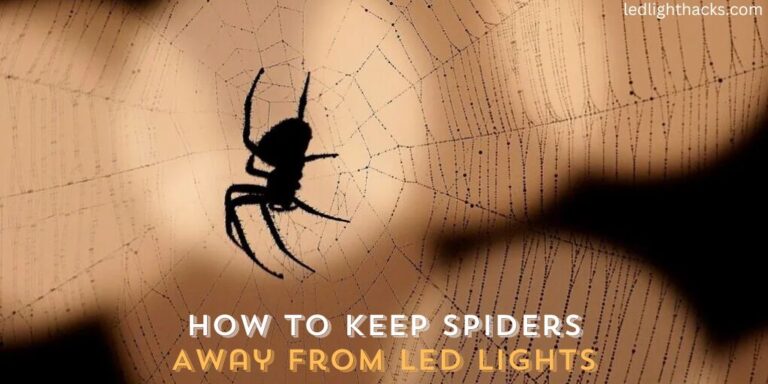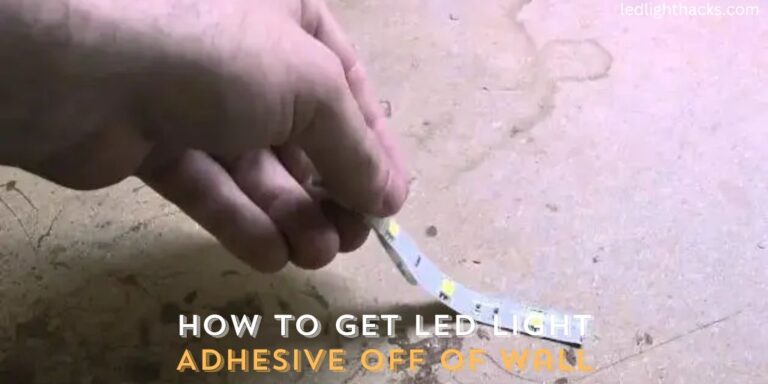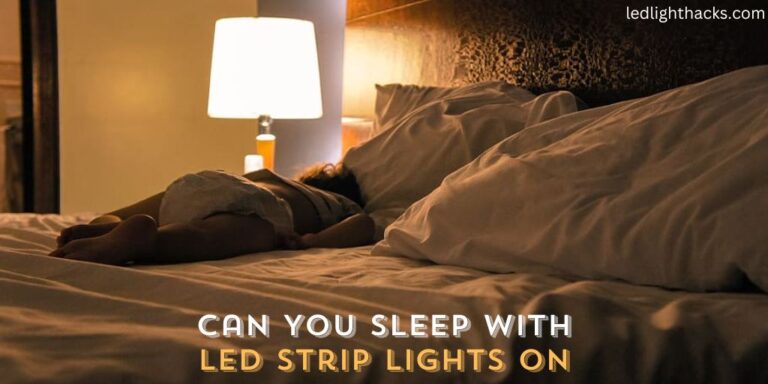How to Hide LED Lights on the Ceiling
Hiding LED lights on your ceiling is a great way to give any room a clean and modern look. It’s not just about hiding wires and fixtures; it’s about creating a space that looks neat and well put together. Whether you love a minimalist style or just want to keep things looking tidy, knowing how to properly conceal LED lights can change the feel of your interior design.
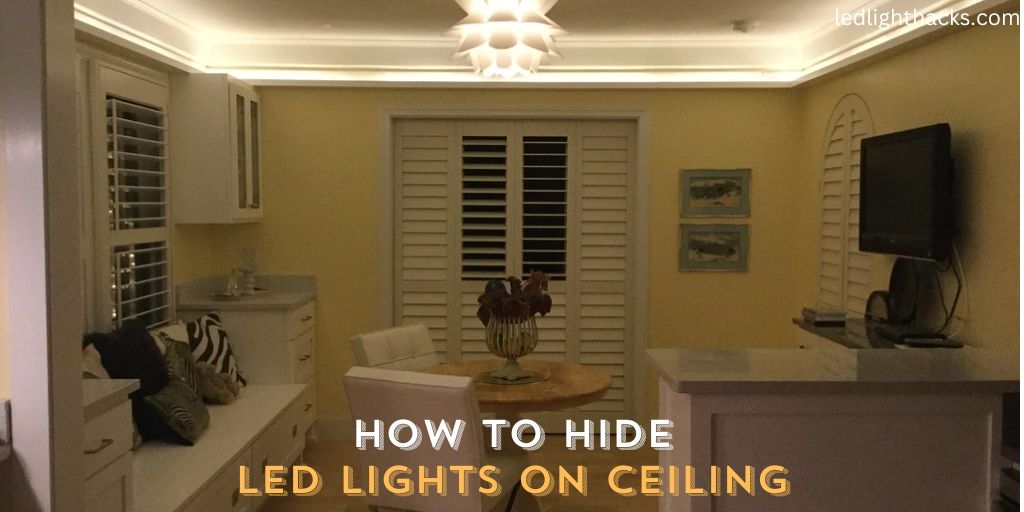
In this guide, we’re going to explore why hiding LED lights on the ceiling is a good idea, what tools you’ll need for the job, and walk you through a detailed, step-by-step process on how to hide LED lights on the ceiling.
Why You Should Hide LED Lights on Ceiling
Hiding LED lights on your ceiling can significantly enhance the aesthetic appeal of any room. This technique avoids visible fixtures or wiring, creating a seamless look that complements the room’s decor.
Concealed LEDs offer a softer, more even light distribution, eliminating harsh glares for a comfortable, inviting atmosphere. This approach not only improves the visual appeal but also enhances the ambiance, making the space more relaxing and enjoyable.
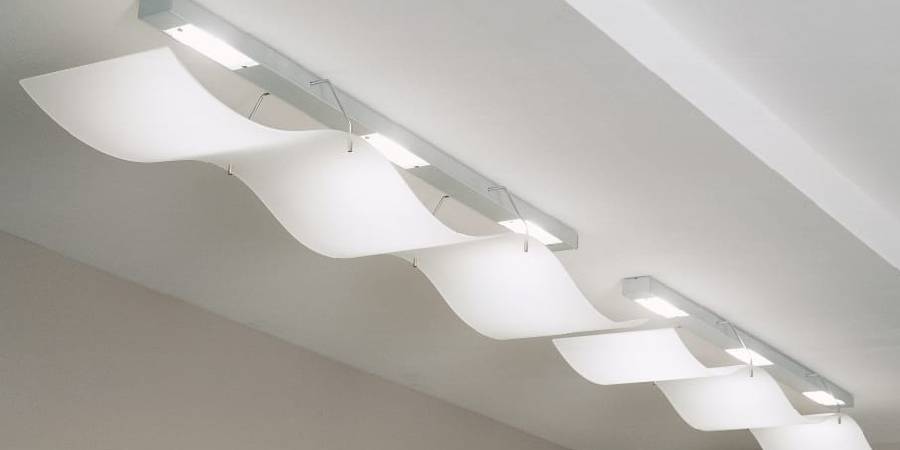
Additionally, hidden LED lights provide design flexibility, allowing for a customizable lighting experience that can adapt to various moods and activities, all while being energy-efficient.
Tools We Need to Hide LED Lights on Ceiling
Before you begin the process of concealing LED lights on your ceiling, it’s important to gather the right tools. Having the correct equipment at hand makes the installation smoother and ensures a professional-looking finish. Here’s a list of essential tools you’ll need for this task:
- Measuring Tape: Essential for getting accurate measurements of your ceiling and the areas where you’ll install the lights.
- Marker/Pencil: To mark the spots where you’ll be placing the lights or making holes.
- Drill: This is used for creating mounting holes, crucial for a secure installation.
- Screwdriver: Needed for fastening any fixtures or panels in place.
- Wire Strippers: These are important for safely handling and preparing electrical connections.
- LED Light Strips/Cover Panels: The core components of your project, are chosen based on your specific design and lighting needs.
- Adhesive Tape or Glue: Ideal for installations where you want to avoid drilling or making permanent changes.
By preparing these tools beforehand, you’ll be well-equipped to tackle the task of hiding your LED lights effectively. Remember, the right tools not only make the job easier but also ensure a safe and successful installation, resulting in a beautifully lit and visually appealing ceiling.
How to Hide LED Lights on the Ceiling
Concealing LED lights on your ceiling can dramatically change the ambiance of your room. This 500-word guide will take you through a step-by-step process, making it straightforward and accessible even for those new to DIY projects.
Planning and Measurement
First, carefully plan where you want your LED lights to go. Measure the ceiling area and consider the length of the LED strips and the location of power sources. It’s crucial to get this right for a balanced look and functional setup.
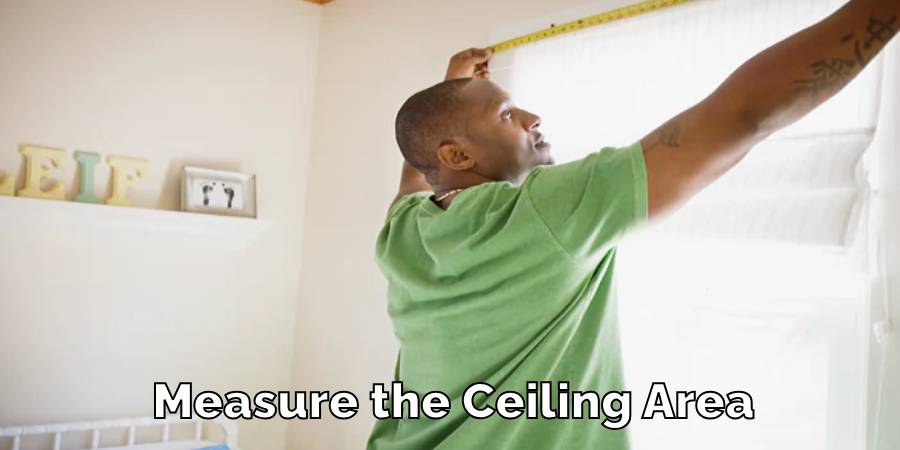
Choosing the Right LED Lights
Select LED strip lights that complement your ceiling type and room’s aesthetics. The color temperature and brightness are key factors here warmer lights create a cozy atmosphere, while brighter, cooler lights are ideal for workspaces.
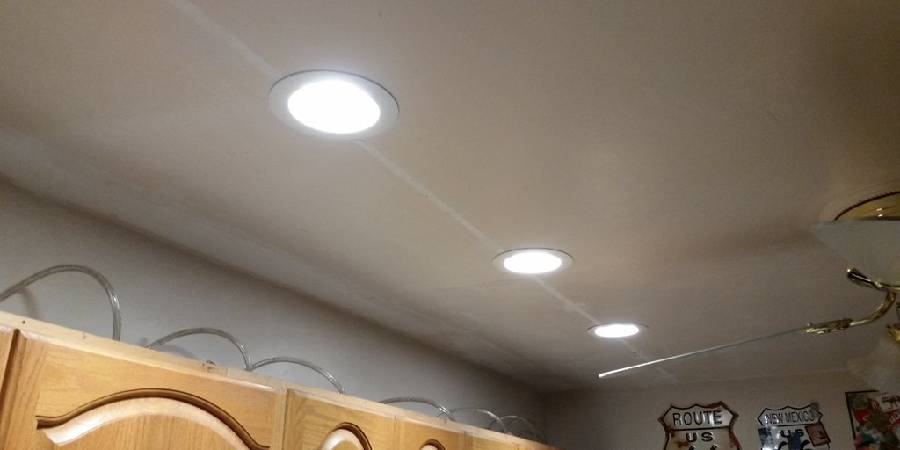
Preparation of Tools and Materials
You’ll need a few basic tools like a measuring tape, pencil, drill (if you’re attaching lights to a solid surface), screwdriver, and possibly a ladder to reach the ceiling.
Prepare the Ceiling
Clean the area where you’ll be attaching the LED lights. If you’re using adhesive-backed LED strips, the surface needs to be dust-free to ensure a good grip.
Install a Mounting Channel
For a truly hidden look, use aluminum mounting channels (also known as profiles or extrusions). These can be attached to the ceiling and painted to match. The LED strips are then placed inside these channels, concealing them from direct view and creating a diffused light effect.
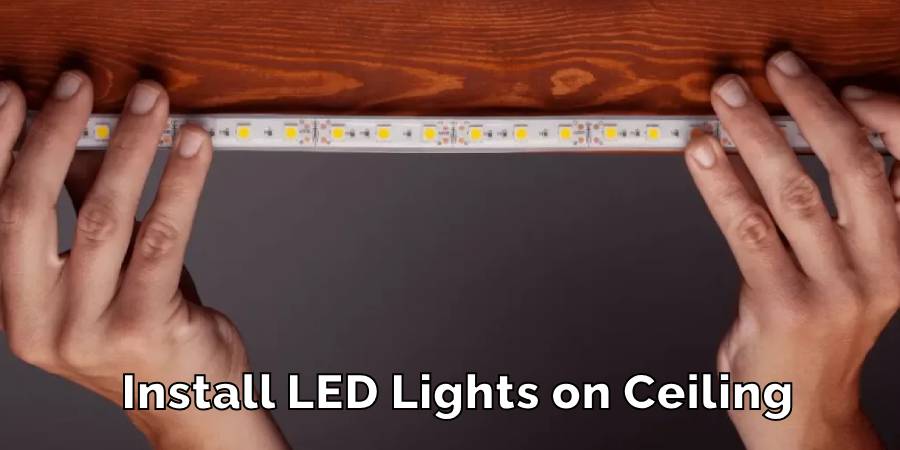
Wire the Lights
Depending on your setup, you may need to run wiring to a power source. It’s crucial to follow electrical safety guidelines or hire a professional if you’re not confident in doing this yourself.
Test Your Lights
Before finalizing the installation, connect the LED strips to power and check that everything is working as it should.
Finish and Conceal
If you’ve used channels, snap on the diffuser covers, which help to hide the LEDs and soften the light. Make any final adjustments to ensure the lights are completely concealed from view when not in use.
By following these steps, you can effectively hide your LED lights, giving your ceiling a clean, sophisticated look. Whether it’s for a living room, bedroom, or home office, this method enhances the space without overwhelming it. Plus, it’s a great way to add a touch of modernity to your home with minimal effort.
Remember, the key to successfully hiding LED lights on the ceiling is planning and precision. Take your time to measure and place everything correctly, and you’ll be rewarded with beautifully discreet lighting that transforms your space.
Precaution while Hiding LED Lights on Ceiling
When installing LED lights on your ceiling, prioritizing safety is crucial. Here are some essential safety tips to follow:
- Turn Off Power: Before you start any work, always turn off the main power supply. This prevents the risk of electric shock and ensures a safe working environment.
- Insulate Wires Properly: Make sure all wires are properly insulated. Exposed or poorly insulated wires can lead to dangerous electrical hazards. If you’re unsure about how to handle electrical wiring, it’s best to seek help from a professional.
- Check for Overheating: After installation, monitor the LED strips for any signs of overheating. Excessive heat can not only damage the lights and ceiling but also pose a fire hazard. Choose LED lights with good quality and heat management.
- Be Careful with Ladders and Tools: Always use a sturdy ladder and ensure it’s securely placed. Handle all tools, especially drills, and wire strippers, with care to avoid accidents.
- Consult a Professional Electrician: If you’re not confident in your electrical skills, it’s always safer to consult a professional electrician. They can ensure that the installation is done correctly and safely.
- Avoid Water Exposure: Keep LED lights away from any water source. Water and electricity are a dangerous combination, and proper waterproofing is necessary if installed in moisture-prone areas like bathrooms.
- Regular Maintenance Checks: After your LED lights are installed, regular checks are important. Ensure the lights and their components are in good condition and functioning properly to avoid any potential hazards.
- Follow Manufacturer’s Instructions: Always adhere to the guidelines provided by the LED light manufacturer. This includes installation procedures, usage, and maintenance tips.
By following these precautions, you can safely hide your LED lights on the ceiling, ensuring both a visually pleasing and hazard-free environment in your home.
FAQ’s
How Do You Cover LED Lights on the Ceiling?
To cover LED lights on the ceiling effectively, there are several methods. One common approach is using diffuser panels, which can be installed to conceal the lights while still allowing their glow to illuminate the room.
Another option is to create a false ceiling layer, a secondary layer below the main ceiling, where the LED lights can be placed.
This not only hides the lights but also provides a neat and finished appearance. These methods ensure the lights blend seamlessly with the ceiling, maintaining the room’s aesthetic appeal.
How Do You Cover Annoying LED Lights?
For LED lights that are too bright or direct, there are a few solutions. You can use light-diffusing materials, such as frosted glass or acrylic panels, to soften the light. These materials scatter the light, reducing glare and making the room more comfortable.
Additionally, adjusting the angle of the lights or installing a dimmer switch allows you to control the brightness, creating a more adaptable lighting environment.
Can I Cover LED Lights With Tape?
It’s generally not a good idea to cover LED lights with tape. Tape can trap heat, leading to a buildup that might shorten the lifespan of the LEDs and potentially create a fire hazard.
A safer alternative is to use specially designed LED covers or diffusers. These are made to fit over the lights, providing coverage without the risk of overheating.
How Do You Hide LED Light Dots?
To hide the pinpoint dots often seen with LED strip lights, you can use light diffuser panels or frosted covers.
These accessories are designed to spread out the light from each LED, creating a more uniform and soft light effect. This approach is especially useful in areas where you want to avoid the spotted look of direct LED lights, like in living rooms or bedrooms.
Do LED Lights Need a Cover?
While LED lights don’t always require a cover, adding one can have several benefits. Covers can enhance the overall look of the lights, making them blend better with your ceiling or walls.
They also protect the LEDs from dust and damage, potentially extending their lifespan. Furthermore, covers can help diffuse the light, making it softer and more evenly distributed across the room.
Conclusion
Concealing LED lights in your ceiling is a great way to improve your living space, bringing together both practicality and visual appeal. Equipped with the necessary tools, a well-thought-out plan, and a touch of creativity, you can effectively blend lighting with your home’s decor.
It’s essential to balance the look you want with the safety and functionality of the installation. This guide is designed to provide you with the essential knowledge to transform your environment with hidden lighting solutions.
By doing so, you can enhance both the comfort and charm of your home, creating a more enjoyable and inviting space for you and your guests.
How to Change a Light Switch without Turning Off the Power
Mastering the skill of changing a light switch without turning off the power holds great…
How To Stick LED Strip Lights On Wall Without Damaging Paint
LED light strips have surged in popularity, adorning homes and spaces with their vibrant colors…
Can Led Lights Get Wet
LED lights are everywhere, from homes to city streets, known for their efficiency and brightness….
Creative Ways to Use LED Strip Lights in Your Home
LED strip lights, those brilliant strips of technology, serve as a beacon of innovation in…
Can Solar Lights Catch Fire
Solar garden lights are your go-to pal for lighting up your backyard oasis while keeping…
What gauge wire for LED lights
When diving into LED lighting, one aspect that might not catch your eye at first…

